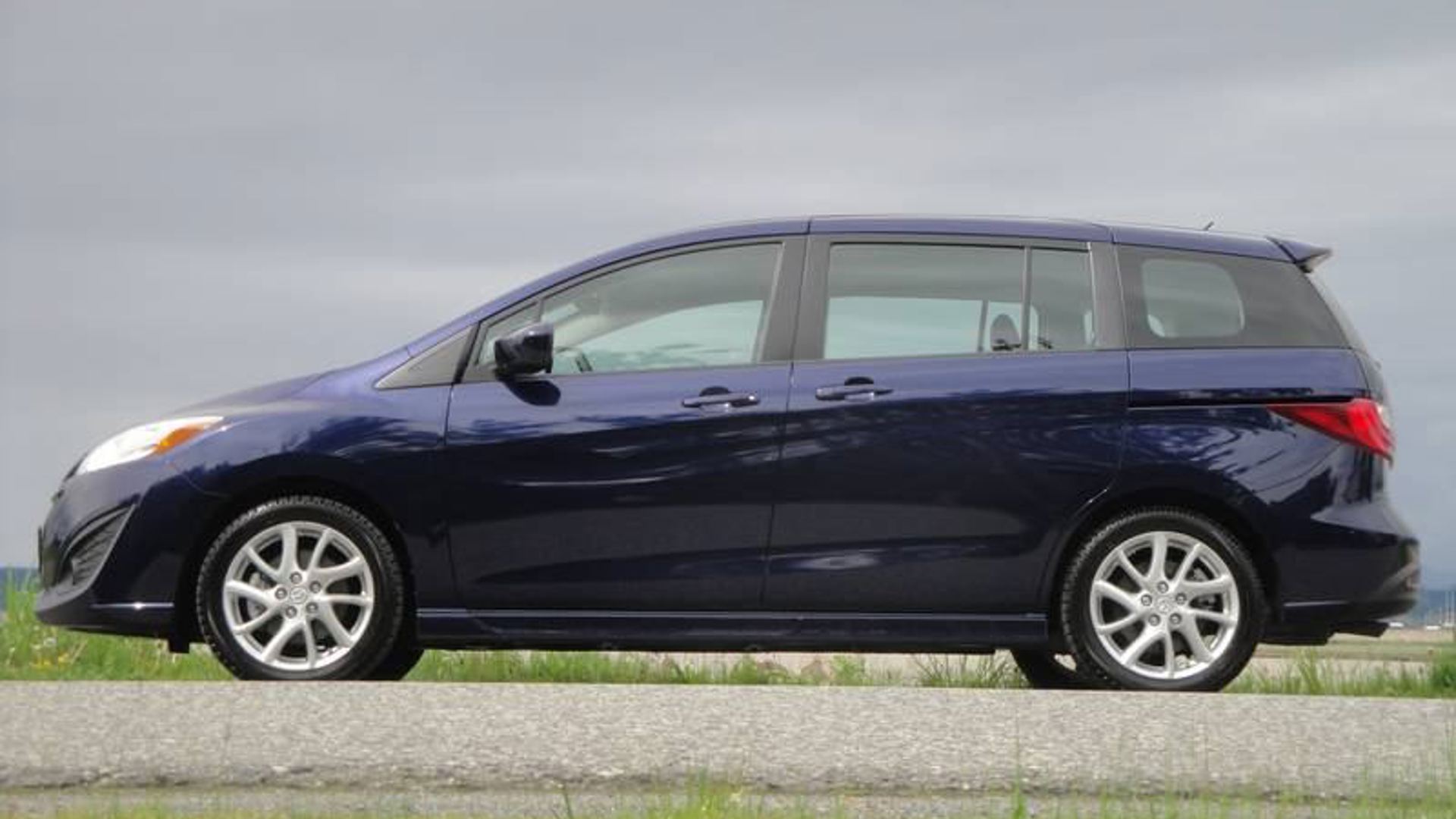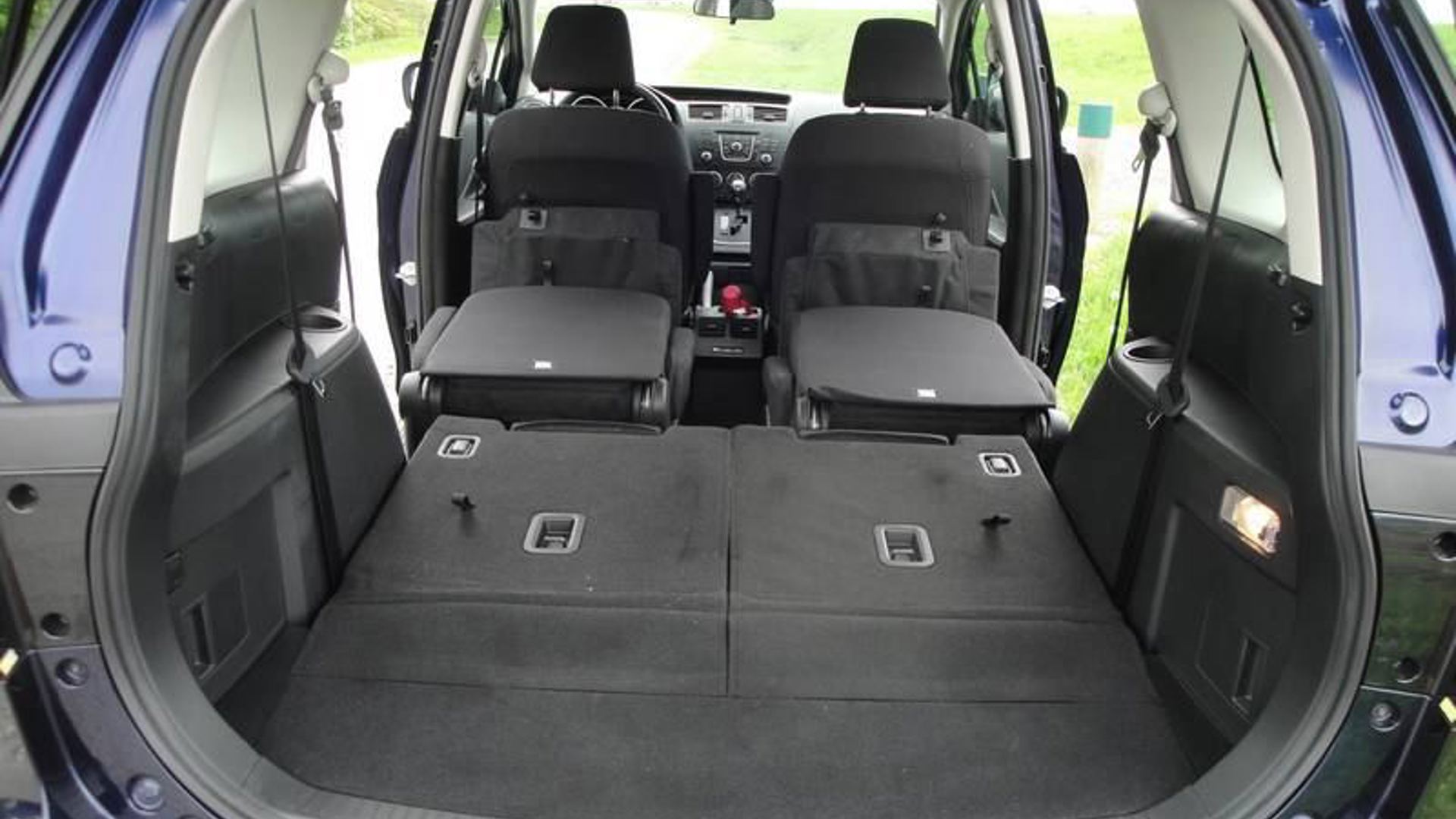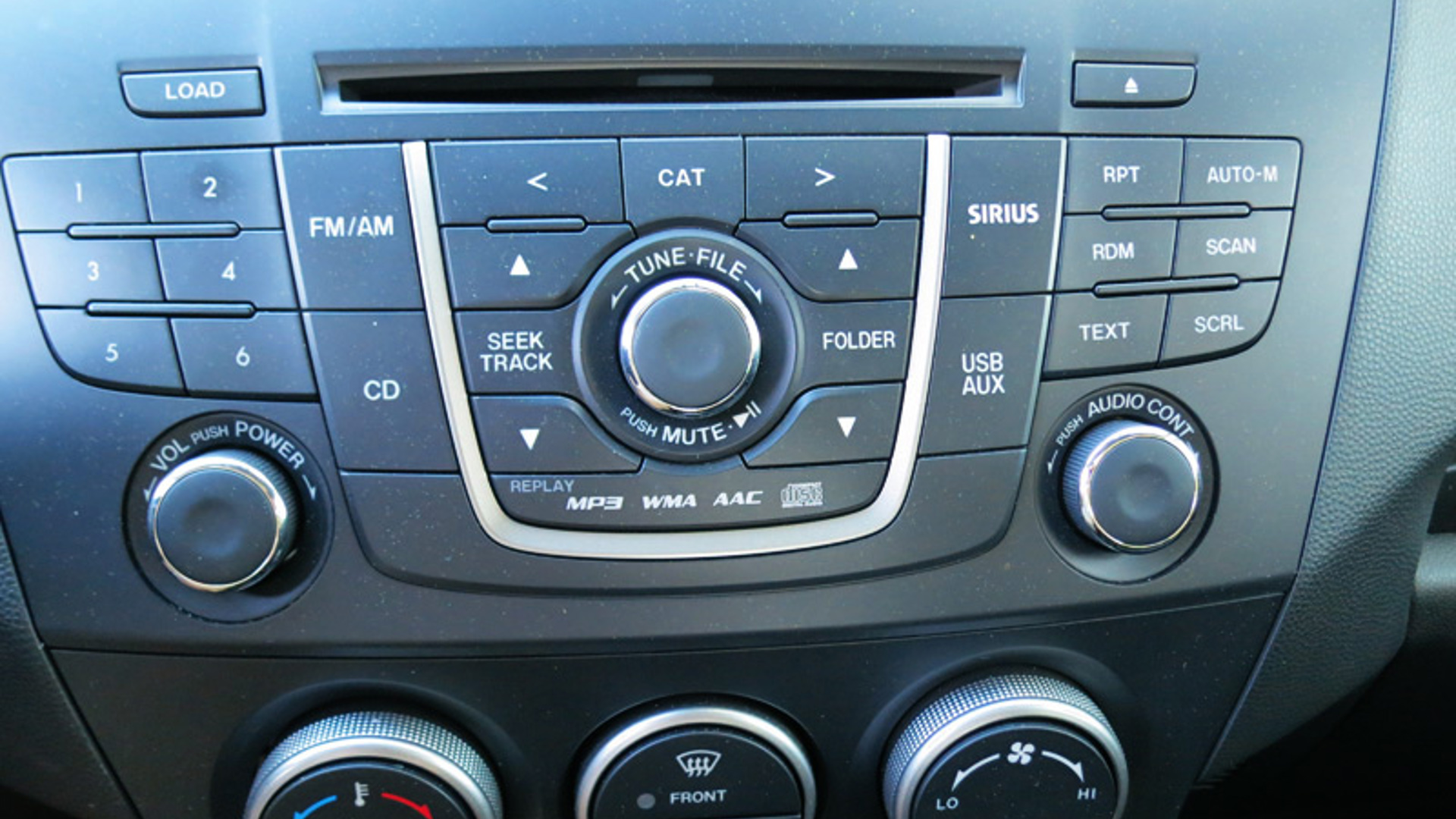Vehicle Type
This one’s a niche product, with even company officials claiming the second-gen Mazda 5 wasn’t designed to fit into a specific mould, category, or segment.
Minivan
History/Description
The Mazda5 went on sale in model year 2012 for its second generation in North American markets, positioned as an evolution of the original mini-minivan, and featuring new styling, new features, a new engine and new options.
This one’s a niche product, with even company officials claiming the second-gen Mazda 5 wasn’t designed to fit into a specific mould, category, or segment. All units got a pair of sliding rear doors, three seating rows with room for six total occupants, and plenty of flexible space. The Mazda5 was popular with shoppers after a fuel-efficient and easy-to-drive solution to transport small families, numerous toddlers or pets, and the like.
The space for the dollar quotient was high when the Mazda5 was new, and used copies will further the value equation for shoppers after big-time space for relatively affordable used pricing, and low fuel costs.
Look for 857 litres of available cargo space, and upscale feature content like steering-wheel-mounted audio controls, available leather-trimmed seats, automatic lights and climate control, and a hands-free Bluetooth phone interface.
With family transportation duty in mind, the Mazda5 was also big on safety equipment. Standard with advanced anti-lock brakes, electronic brake-force distribution and four-wheel disc brakes; engineers specified braking hardware and software to deliver predictable and consistent stops, regardless of road surfaces and vehicle loading. Traction control and dynamic stability control help reduce wheel spin and vehicle skidding in challenging conditions, too.
Engines
All models run a 2.5L four-cylinder engine with 157 hp. Built on Mazda’s MZR engine architecture, the 5’s powerplant is designed for long-term reliability, pleasing power output and good fuel efficiency on regular-grade gasoline. Drivers can choose between a six-speed manual transmission and a five-speed automatic. All units are front-wheel drive. Notably, the Mazda5 won an ecoENERGY for Vehicles Award from Natural Resources Canada as the most fuel-efficient minivan.
What Owners Like
Owners tend to rave about the Mazda5’s optional back-up sensor system, ease of loading and unloading small kids, fuel efficiency, maneuverability, and overall flexibility. The manual transmission is a favourite feature amongst enthusiast drivers, and many owners note that the suspension feels sturdy and report good ride quality. Feature content for the money helped attract many shoppers, many of whom have owned more than one Mazda5. In all, most owners say they love this machine, and would buy again. The most commonly loved attribute, for many owners, is satisfaction that this little minivan doesn’t drive like a great big minivan.
What Owners Dislike
Some owners wish for an easier time achieving rated fuel economy figures, and many note that the rear seating row is best reserved for very small passengers, or left folded down for additional cargo space.
The Test Drive
Start with a walk-around of the 5 you’re considering with an eye for rust, scrapes and damage to the paint, body panels and wheels. Closely inspect vulnerable body parts, like the hood edge, the front area of the rocker panels and fenders, just behind each wheel, and the lower edges of the doors, for signs of paint wear and rust. Earlier-generation Mazda5 models saw several owners complaining of premature rust and poor durability from the paint, but it seems like the second-generation Mazda5, discussed here, addressed these concerns.
Inspect the wheels for signs of curb damage, be sure the tires have plenty of tread remaining and aren’t cracked or bubbled. Some owners of early copies of the Mazda5 from this generation have reported excessive premature tire wear, so if the unit you’re considering happens to be running original tires, you’ll want to be double-sure they still have plenty of remaining life. Grab yourself a tire tread depth gauge before your test drive – your favourite auto parts store probably sells them for under $5.
Confirm proper operation of all exterior lighting, with an eye for any moisture buildup or condensation in the headlights, which can cause problems. Note that changing a headlight bulb may be frustrating for the average owner, so now’s the time to make sure all lighting provisions are functional. Note that higher-end models, like the Mazda5 GT, employ xenon lighting, which can be even pricier to repair if anything is burned out.
Next, move to the sliding doors, confirming that each one opens, closes, latches, locks and unlocks as expected, several times. On older units, some owners have reported issues with sliding door mechanisms, mostly, relating to latch mechanisms that freeze and fail to work properly in extreme cold. By the second generation of this model, it seems that the issue was remedied, though a careful check is still advised. Note that non-functional locks or latches will require further attention – with adjustments or replacement latch, lock or actuator parts being the likely fixes if any issues are noted.
Here’s a DIY writeup on sliding door lock actuator replacement, which is likely required if several attempts are required to make the power locks lock the door. If this is the case, try and have the seller knock a few bucks off of the purchase price to fund the repair. Be sure to try all available remote keyfobs, to lock and unlock the doors, several times on your test drive, too.
Check the climate control fan on all speed settings, and be on the lookout for any unpleasant odors, unwelcome sounds, or excessive vibrations. Some owners say that the intake to the climate control fan can collect debris, and may even prove an inviting place for rodents to nest. Cleaning the area round the HVAC fan intake isn’t too difficult, if you note any trouble.
Move through the interior, trying all other features and functions, including the Bluetooth system, all power windows, the central command system, the stereo, and the seat adjustments, confirming proper operation. Test drivers are advised to confirm that all seat folding and seat sliding adjustments work as expected, too. If that’s not the case, a broken latch or lever may be the culprit, though few owners have reported problems. Scrutinize the cabin for signs of excessive wear to seating surfaces, cargo load surfaces, and door sills, which can take a lot of abuse from passengers entering and exiting, too.
Other checks are fairly generic. On models with the manual transmission, be sure that the gearbox doesn’t grind or bite back when shifting quickly from first to second gear at high revs, which could be a sign of transmission wear. Be sure the clutch has plenty of bite and doesn’t slip at lower revs when full throttle is applied, which could indicate excessive clutch wear. Though no issues were reported in your writer’s search of trouble with the automatic transmission, shoppers are reminded that clumsy or harsh shifting can often be remedied with updated transmission software – but that any transmission-related issues should be attended to by a Mazda technician.
Due to a handful of reports by owners of potential problems with wheel bearings, brakes and parking brake components, mostly on earlier models from this generation, these items are prime candidates for a full inspection by a trained mechanic ahead of your purchase, too.
The Verdict
So far, the Mazda5 looks to be a solid used-vehicle bet, with most issues being easy to detect during a pre-purchase inspection, and reported infrequently. A positive pre-purchase inspection at a Mazda dealer should be all that’s required for maximum confidence ahead of your purchase.
Just one recall.
Crash Test Ratings
IIHS: results here












































